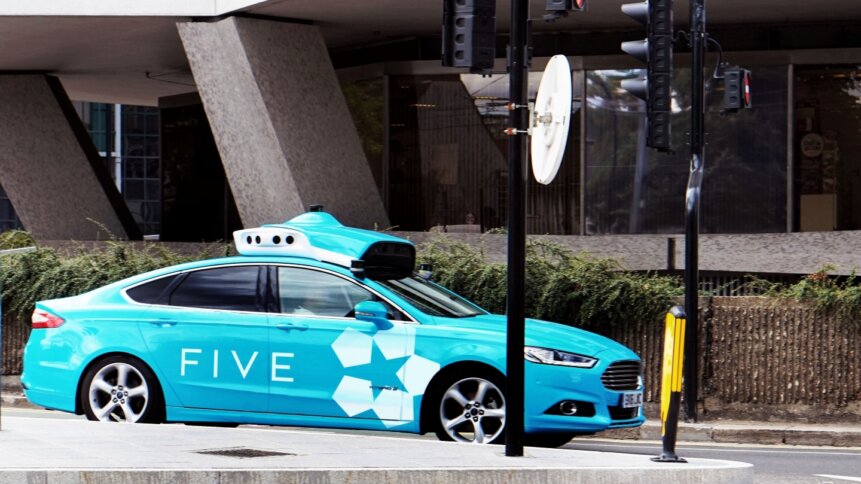Autonomous vehicles navigate market prospects

Back in 2021, Bloomberg wrote that ‘Self-Driving’s Trough of Disillusionment Continues’. But tuning into The Autonomous Main Event 2022, the mood feels more buoyant with plenty of signals that autonomous vehicles are self-driving their way up the ‘slope of enlightenment’. Without a doubt, the road ahead is going to be a complex one to navigate. And a challenging financial climate serves as a reminder that operators need to make businesses out of the big sums of money invested so far.
Checklist for self-driving success
Listening to speakers, there is clarity on what it’s going to take for autonomous vehicles to go mainstream. A big talking point at the Austrian event, held in person in Vienna and online using Flave’s digital conference platform, was partnerships. Building a tech stack for self-driving vehicles is challenging in itself, but the checklist for success runs longer still. Operators need clear messaging on homologating products to ensure that future vehicles are on the right path to achieving certification. And satisfying the statutory requirements of regulators is a conversation that has to run across multiple channels. Developers need to educate officials, which includes not just standards bodies, but also city managers and transport operators.
Stakeholders in the autonomous vehicle development chain are calling for the creation of more real-world test platforms that bring together technology and regulatory elements to enrich the learning experience for all parties. Speakers pointed to Singapore’s Centre of Excellence for Testing & Research of Autonomous Vehicles as an example of the way forwards. The two-hectare site serves as a mini town for testing self-driving buses. There are facilities elsewhere too. The Millbrook proving ground in the UK gives developers the opportunity to test their vehicles on tough terrains. The site also features a configurable private 5G network as part of a government-funded controlled urban testbed for connected and autonomous vehicles (CAVs).
Dialing into the event on the big screen, Mike Potts of StreetDrone commented on the impressive performance of private 5G networks, with latency figures of 10 ms or less allowing vehicles to be driven remotely even at higher speeds over secure cellular infrastructure. And while the wide range of use cases is exciting from an engineering perspective, it’s important for businesses to focus their efforts. In Potts’ opinion, the best way forwards is to target slow-moving vehicle applications first, where the barriers (including regulatory factors) are lower. Examples include industrial vehicles – for example, at container terminals to benefit the transfer of goods across different transport modes.
Keynote voice
In the opening Keynote, Markus Heyn, Chairman of Mobility Solutions at Bosch, referenced the firm’s partnership with Five AI, which brings a cloud-based development testing platform and world-class simulation to the Tier 1 automotive supplier. Leaning harder on simulations and making use of improvements in digital twins – which includes urban examples that are helping to re-imagine cities and streamline road repairs – is another trend that’s helping developers to refine their autonomous vehicles. Simulation is increasingly being recognized as an accelerator when it comes to AI. Heyn rode in Bosch’s self-driving demonstrator just last week and reported that the vehicle was able to flow with the traffic much more effectively compared with his experience 12 months ago.
Building autonomous driving systems that are able to respond naturally to their surroundings will be a key element of winning the trust of passengers. Transport users have grown accustomed to how different vehicles navigate their journeys and will expect self-driving versions to behave in a way to feels familiar and safe. Slower moving urban shuttles are already an autonomous application that has taken off. And there are many success stories in this category to be found.
French provider Navya has sold self-driving shuttles for use at a 17 square mile development in Florida, US. And the fleet deployed there now comprises 22 vehicles. The firm also has its shuttles running on routes in Scotland, Germany, and many other locations. Easymile, which supplies software and complete solutions for driverless mobility and goods transport, claims to offer the most deployed driverless shuttle in the world. The company – which has offices in France, Germany, Singapore, Australia, and North America – enables fully autonomous services in so-called ‘known environments’ such as planned communities, residential areas, and business parks. During the global pandemic, the mission of self-driving shuttles was re-imaged – for example, autonomous vehicles in the US smart city of Columbus were used to deliver almost 130,000 meals.
First movers
Taking a closer look at the applications that have traction points to the problems that autonomous vehicles can help to solve. And high on that list is staff shortages. In areas where transport operators struggle to find workers, self-driving solutions are an easy sell. Moving goods around facilities or along well-understood A to B routes are ripe for autonomous vehicles, either fully driverless configurations or human-piloted convoys, to share just a couple of options. The figures also add up for self-driving platforms in scenarios where passenger numbers are large. It explains the shuttle successes that we touched on earlier. And in coming years many more public transportation authorities will jump onboard as part of sustainable city initiatives.
Autonomous vehicles are typically a good play for smart urban landscapes, especially following the modernization that’s taking place such as hosted traffic light systems that are helping to upgrade city travel. But it also points to the communication that needs to take place between providers of autonomous fleets, and surrounding infrastructure, so that we don’t swap streets congested with regular vehicles for roads jammed up with autonomous versions instead.









